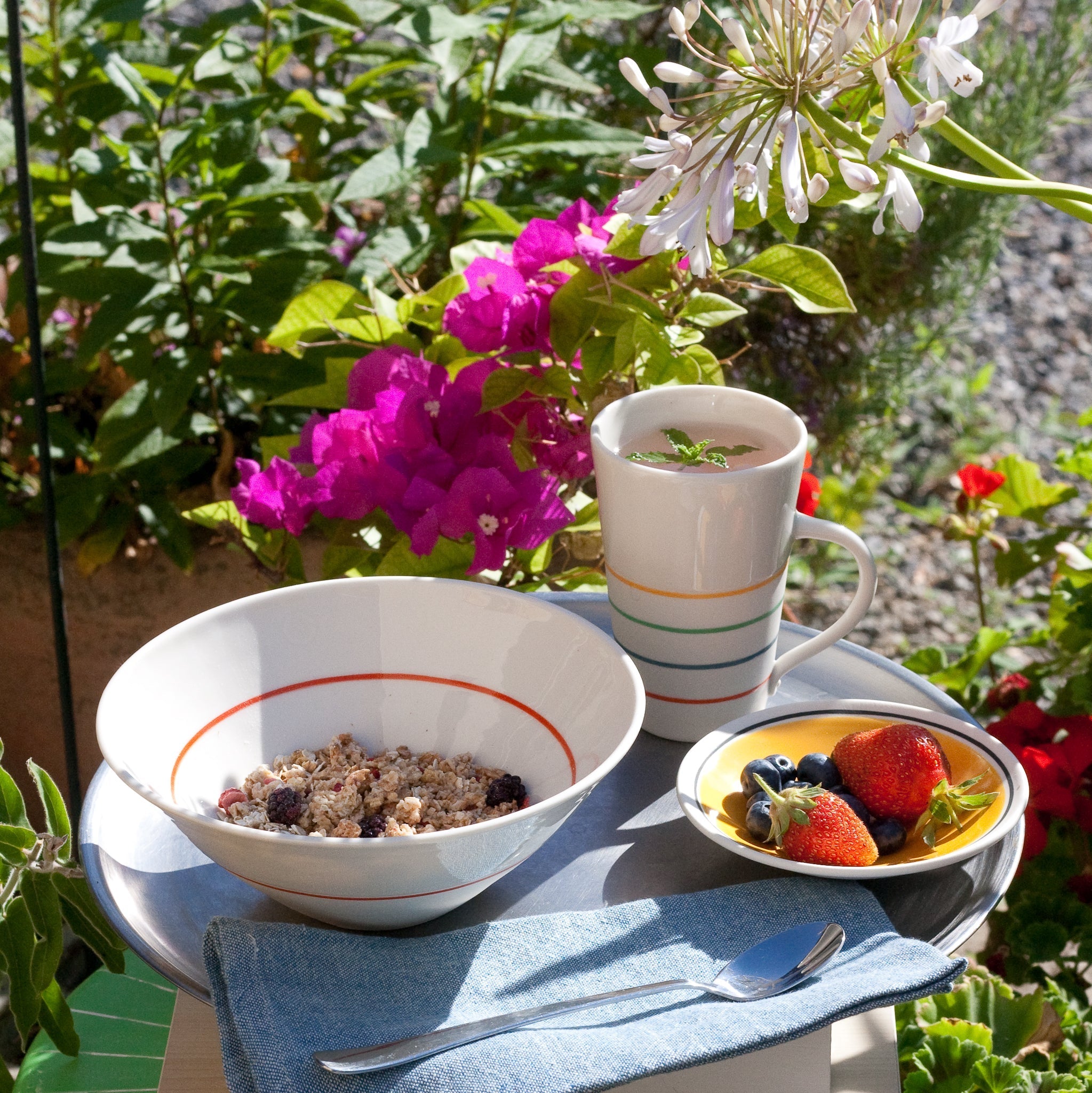Slow living - the common ground between making pottery and creating a garden
- by Sue Ure
-

Pottery and gardening are both major enthusiasms that got me hooked young.
I discovered ceramics and throwing pots when I was 17 and was pretty immediately obsessed! I was exceptionally fortunate while studying for my A’ levels to have attended a local college with a well-equipped pottery studio and excellent teachers. The fascination and physicality of transforming wet clay into something one could use, and that was - with any luck - attractive, was irresistible. I learnt that to develop as a maker of hand-thrown pottery, repeating the same shape, such as bowls or mugs, was a great form of practice. But considerable patience was required, one had to wait (sometimes for days) until the pieces were dry enough to be returned to the wheel. This in turn was only the first of the many stages that follow in the making of a piece of hand-crafted tableware.
Discovering the slow pleasures of gardening came a couple of years later. I moved to a small Victorian terrace in Brixton in south London, which had a surprisingly large and long garden even it was roughly the same shape as a ruler. My mother, a dedicated gardener, had previously tried to convey her enthusiasm to a then totally uninterested teenage daughter but, much to my mum’s amusement, acquiring a garden of my own made all the difference.
My garden had been decently kept - it wasn’t an overgrown jungle of brambles but it was very narrow, and the previous owner had thought a straight concrete path down it was a good idea. That was one of the first things to go! After a while, in agreement with our neighbours, we agreed to replace the disintegrating fence between our gardens with ornamental shrubs, creating a much softer, more decorative boundary. It also gave the illusion in both gardens that the space was wider than it really was. That almost cottage-like garden became a really peaceful haven behind the busy and polluted inner London street on to which the house fronted.
Here in rural southwest France, it’s taken me decades to create a garden that looks like a garden and not a field! Our home is surrounded by a generous roughly half-acre plot. For half of the year the heavy clay soil is a dense mass and for the other six months it’s baked hard. Gardening here meant slowly learning which plants can cope with this soil and these conditions, and equipping ourselves with the array of kit needed to maintain a garden of this size.
Thirty years down the line the saplings we planted have grown into a panoply of proper shade-giving trees - and, despite changing climatic conditions, other shrubs, bulbs and perennials have not only survived but flourished.
As producing ceramics is my profession and gardening isn’t that makes an obvious difference between how I approach the two passions. I am sure the garden took so long to take shape because we didn’t have enough time or energy to devote to it. Family and earning a living - a time-consuming business for a craftsperson - took precedence. But both require significant amounts of patience. I often think how this patient, considered approach shapes my design work - especially in the Ambit collection. It’s why I’ll remake a form, test and retest a glaze, waiting until it feels right - just as I know I’ll have to wait years for a sapling to become shade-giving.
For both, one also needs to be able to visualise the anticipated result, even if the visualisation doesn’t always turn out to have been completely correct. In fact, I find myself repeatedly imagining different combinations of shapes and colours, and then happily adapting them - whether it’s a new piece of pottery, or a finding a new home for a particular plant - as the work moves along.
Both demand pretty constant, time-sensitive attention. Badly cared for plants will suffer or die. Half-made pots can’t simply be left and continued in a week’s time: if an unfinished pot dries too much, it passes a point of no return and will just have to go into the recycling bin. The clay can be re-used but the time already invested is lost.
The best things take time!






